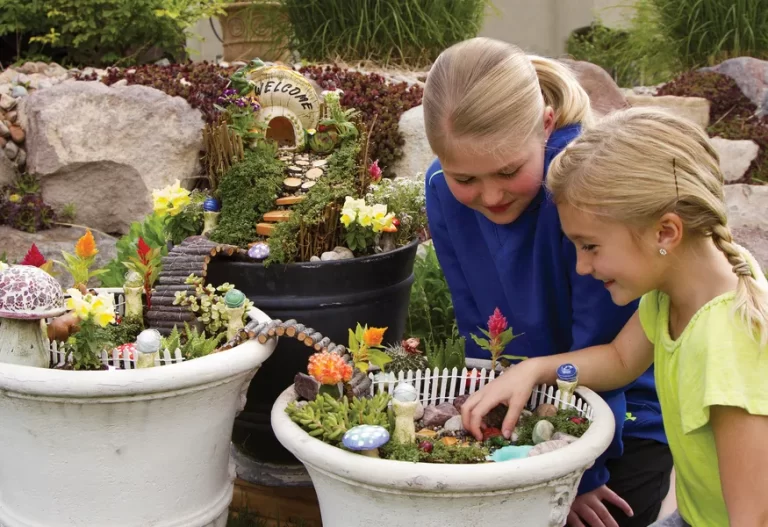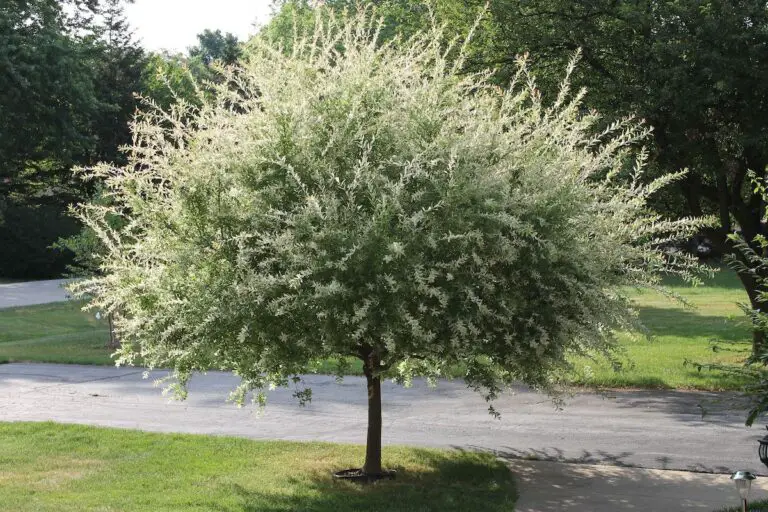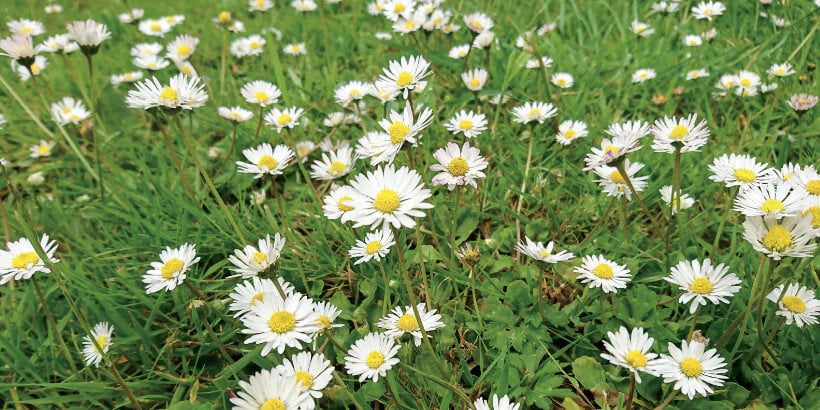The Secret to Unlocking Superb Tomatoes
The primary time I heard about grafting tomatoes, it appeared like one thing solely a scientist might pull off. However the extra I researched the potential advantages and noticed different farmers have been doing it, it appeared foolish to not give it a shot!
Mostly utilized in orchards, grafting vegetable vegetation comparable to tomatoes, cucumbers, and eggplants is taking maintain within the farming and gardening world, and it’s thrilling.
When you see the outcomes from a grafted tomato plot, you’ll by no means return to the standard manner of rising tomatoes. Earlier than you begin, it’s necessary to know the fundamentals. Proceed on to be taught precisely what grafting is, and why it’s the key to unlocking superb tomato vegetation in your backyard thi season!
What’s Grafting?

Grafting is the act of splicing collectively two totally different vegetation of the identical species. This enables the gardener to reap the advantages of the rootstock selection.
The rootstock, or inventory, is bred for illness resistance and vigor however not essentially for fruit manufacturing. The scion is the tomato selection you’d just like the fruit of which is grafted to the rootstock.
Whereas it does include some extra time and value, the advantages outweigh the difficulty that goes into the strategy of grafting.
Why You Ought to Graft Your Tomatoes

All of us have our favourite heirloom tomatoes, proper? And we additionally know that heirlooms are liable to illness and pest strain. They aren’t as accustomed to the altering local weather, and don’t produce practically as a lot as modern-day hybrids.
In a nutshell, grafting combines the traits of the rootstock with the scrumptious tomato of the scion. This leads to greater manufacturing, decrease illness strain, and an extended season of you having fun with your favourite tomatoes.
Farmer-to-farmer tip: In case you are rising tomatoes to promote, grafted tomatoes have a lot of advantages.
- The power to transplant sooner as a result of grafted tomatoes are likely to deal with cooler temperature soil
- Sooner development
- You’ll get mature fruit earlier
- Vegetation have extra trusses filled with tomatoes
- The power to face up to lengthy, scorching summers, resulting in an extended season
- Elevated income and blissful prospects
The most important drawback you might need is discovering extra shops at which to promote your tomatoes! Belief me, you’re going to have much more!
A Transient Historical past of Grafting

The primary report of grafting is assumed to have been again in 500 AD when farmers grafted collectively a number of totally different gourd vegetation as a result of they needed bigger fruit and a better root system. That’s farmer ingenuity proper there.
Then within the Twenties in Japan, grafting was reintroduced to farmers. It was seen as a revolutionary method to produce greens when an article was revealed a couple of man named Ukichi Takenaka who grafted a watermelon onto a pumpkin. By doing so, he efficiently overcame the dreaded Fusarium wilt.
Extra lately, you will have heard of apple timber being grafted or the ever-popular “fruit salad timber” the place a number of various kinds of fruits are grafted collectively on a single rootstock.
Pre-Grafting

There are three broadly accepted methods to graft tomatoes that I’ll focus on right here. The splice graft, the aspect graft, and the cleft graft. They will all appear a bit scary and unusual. However identical to anything, it simply takes some follow to get used to it. Primarily based on my expertise, you’ll get higher with each minimize
What you’ll have to get began:
- A miter-cut grafting knife or conventional razor blades
- Rootstock seeds
- Your favourite tomato seeds (which can be about to get even higher). Will probably be known as scions.
- Totally different-sized silicone clips and/or aspect graft spring clips
- Help stakes
- Misting spray bottle
- Humidity domes or a therapeutic chamber
Begin your tomato seeds as you usually would, noting that rootstock varieties usually have inconsistent germination and development. To keep away from any confusion, we begin our scion varieties in 50-cell trays and the rootstock in particular person 2-inch pots.
That is so when it’s time to chop and clip, there is no such thing as a method to combine up the 2 varieties and the tray of 2-inch pots can go straight into the therapeutic chamber.
At in regards to the 3-week mark, examine the scale of the rootstock and scion tomatoes. You need the stems to be as shut in diameter as potential for a profitable graft. Have in mind, you are able to do your grafting in a couple of session. The expansion of your scions will catch as much as the rootstock.
After getting sufficient tomatoes that match up in dimension, seize your provides and wholesome tomato vegetation. Ideally begin in a mild-temperature workspace out of the solar when getting began.
Splice Grafting

Discover the grating knife options totally different stem notches. Discover a snug grasp and line the stem of your rootstock with one of many stem notches.
The best way this device is constructed makes it fairly foolproof. Simply be sure to maintain the stem in the identical notch every time. The design holds the razor blade on the right angle (about 45°) every time you chop. This fashion, your stems line up with each other earlier than grafting.
Right now, go forward and snip the tops off of the rootstock above the cotyledons (these small leaves on the bottom a part of the plant and the primary to emerge) and discard them. Discover a clip dimension that works for every of the rootstocks and clip it proper on.
These differ in dimension, starting from 1.5-3.5 mm. It’s a good suggestion to have a number of sizes to select from. Now, go searching for a equally sized scion high and snip it above the cotyledons. Use the identical angle you chop the rootstock. The angle matching up as near excellent as potential is essential for a seamless graft.
Farmer-to-farmer tip: In case you are rising on a bigger scale and are doing a number of trays of those at a time, you are able to do all of the cuts on the identical time. You would possibly count on that all the rootstocks will simply die as quickly as you chop their tops off. However I promise you, they gained’t. Work swiftly and confidently. You might have a while. It’s higher to take your time than to hurry and make errors.
Professional tip: If the stems aren’t precisely the identical dimension, at all times pair a bigger rootstock with a smaller scion. The reason being, in the event you do the alternative, the plant might turn into top-heavy and fall over. Nevertheless, if it’s too small, there is probably not sufficient floor space to “take” so attempt to get the stems as shut in diameter as potential.
Now that you’ve got your scion high and rootstock backside minimize, loosen the clip and decrease the scion high in, lining up the angled cuts till they’re snugly touching.
Now tighten the clip again across the two stem items. Make certain the cuts are in the midst of the clip for stability. Add a assist stake if needed.
Aspect or Tongue Grafting

Aspect grafting is finished with a daily, sharp razor blade. You’ll want to use a brand-new razor blade every time you might be grafting to keep away from any illness contamination. For this technique, you’ll nonetheless minimize off the highest of the rootstock to start. Then determine a equally stem-sized scion.
Make an upward minimize close to the highest of the rootstock stem about ⅔ of the best way by means of the stem. Make a equally positioned downward minimize within the scion and match the cuts collectively. Utilizing a aspect graft spring clip that matches each stems, safe them collectively. Then put them right into a pot collectively and add a bit soil.
At this level, they’re able to be lined with a humidity dome or put right into a therapeutic chamber for 2-3 days. After this time, take away the plant (s) and make a solely partial minimize within the scion stem so the plant can acclimate to utilizing the rootstock roots.
In the event you make a full minimize instantly, the plant could also be shocked. Put it again into the therapeutic space for two extra days. Then you may minimize the remainder of the scion stem off. A day or two extra within the therapeutic space is suggested.
Cleft or High-wedge Grafting

As with the opposite two sorts, begin by reducing off the highest of the rootstock. Then, utilizing a brand new, sharp razor blade, slice a small slit down the middle of the rootstock stem vertically, about .5 cm.
Then, minimize your equally stem-sized scion high right into a wedge the identical size because the slit you simply made within the rootstock. Think about it to be form of like the form of a flathead screwdriver. Now place the scion “wedge” into the slit and clip the graft space.
The primary benefit of this technique embody not needing such excessive humidity to heal the graft. Some form of therapeutic space remains to be suggested.
Put up Graft Care and Therapeutic

Correct humidity ranges are very important after grafting takes place. Humidity helps the graft wound heal and ideally stays round 90-95%, with the exception being in the event you cleft graft.
In case you are doing this on a reasonably small scale, humidity domes work simply wonderful. You must calmly mist after which cowl the tomatoes instantly after their “surgical procedure” after which retailer them in a heat surroundings out of the solar. This might be underneath a greenhouse desk, in a house closet, or in a therapeutic chamber.
Farmer-to-farmer tip: A therapeutic chamber goes to be essential if you’re grafting a number of trays of tomatoes at a time. This can can help you management the humidity and preserve all of your vegetation in the identical surroundings.
Throughout this time, the vegetation are merely therapeutic, not rising. Maintain this in thoughts when planning on your season. You could wish to begin your tomato seeds sooner than regular to account for the time the vegetation might want to heal. After 2-3 days in a therapeutic chamber or underneath humidity domes, it is best to crack the door or dome to lower the humidity.
You must also take into consideration introducing some gentle. For us, this implies merely cracking the door of our therapeutic chamber a bit extra every day. This enables the vegetation to slowly acclimate. Finally, they obtain a full day trip of the therapeutic chamber underneath oblique, synthetic gentle.
Later nonetheless, we deliver them out to our greenhouse, introducing them to the actual solar with the safety of shade fabric, then finally, direct daylight.
If at any time throughout a brand new stage as a part of the post-graft course of your vegetation begin to wilt or look unhealthy, they is probably not prepared and must be positioned again into the earlier stage. Simply preserve a detailed eye on them all through the method.
This may occasionally sound like an additional quantity of care, and maybe it’s. However think about you simply had surgical procedure and you got a bandaid and despatched again to work the following day. I promise in the event you child these vegetation just a bit bit after the grafting course of, which within the grand scheme of issues is about 4 weeks, you’ll be blown away by the outcomes.
Be aware that the silicone clips will work their manner off because the stems develop. Retrieve these all and disinfect them earlier than utilizing them once more. Backside water or misting will likely be finest for awhile because the tops proceed to heal.
A Few Vital Notes

When utilizing any grafting approach, in the event you minimize above the rootstock cotyledons, remember that you will want to examine for early suckers that the rootstock is sending out. Since these can be beneath the graft line, the sucker will likely be producing rootstock fruit, which you don’t need.
To keep away from this subject completely, you may minimize beneath the rootstock cotyledons. Your plant will likely be a bit shorter and it might be a bit more durable to graft, however there gained’t be any risk of suckers because the rootstock can have no leaves of its personal.
Additionally, keep in mind these adventitious roots I discussed earlier? Your scions would possibly begin forming a lot of these on the graft level. That is regular. Simply make sure to snip them off or enable them to dry out fully earlier than planting out.
Grafting tape could also be used to assist within the therapeutic course of.
Transplanting Grafted Tomatoes

In case you have efficiently grafted and healed tomato vegetation, preserve studying, as a result of probably the most essential a part of now having a profitable season with these tomato vegetation is definitely transplanting.
Any solanaceous vegetable plant, which tomatoes fall within the class of, varieties small, bristly roots alongside their stem, referred to as adventitious roots. In the event you maintain a sizeable tomato plant as much as the sunshine, you may see little hair-like fuzz. These are the roots.
These roots are shaped from non-root materials and the time period adventitious merely means they’ve the power to turn into a root if they arrive into contact with soil. Fairly cool!
Now, if you consider being instructed to bury tomatoes (un-grafted vegetation that’s) deep beneath the soil when transplanting for a powerful plant base, this will likely make extra sense now. The adventitious roots all alongside the stem will shoot out into the soil, turning into actual roots. This provides power and stabilization to the tomato plant, setting it up for achievement after transplanting.
The rationale I point out all of that is within the case of grafted tomatoes, the graft line should not be buried beneath the soil floor. If this occurs, the entire strategy of grafting can have been a waste. It’s because the scion selection stem will ship out roots, transitioning again into the scion selection and dropping the consequences of the graft altogether.
So when transplanting grafted tomatoes, dig your gap a bit extra shallow than you often would. After including any amendments or compost to your gap, tuck your tomato in, being certain to maintain that graft line properly above the soil floor. Give the vegetation assist if wanted and from right here on out, they are often handled as regular.
Steadily Requested Questions
It’s okay, simply snip them off as quickly as you may earlier than they begin sending power to these elements and producing fruit. To keep away from this sooner or later, you may minimize your rootstock beneath the cotyledons so there is no such thing as a probability of it sending out suckers. You could discover it’s a bit more durable to chop the stem so simply take warning.
It feels like possibly your rootstock dimension is bigger than the scion tops. Discover a scion with a equally sized stem for higher outcomes.
In case you are seeing some limp leaves and slimy facilities of tomato vegetation, you will have watered an excessive amount of. Bear in mind, the humidity dome holds humidity in very properly and so long as you retain your humidity degree excessive sufficient in a therapeutic chamber, you shouldn’t need to water a lot. Perhaps only a spritz each few days. If the soil feels damp, the vegetation are wonderful.
After a couple of week or so, you may sacrifice one among your vegetation by taking it out of the humid surroundings and seeing the way it does. If the highest doesn’t fall off and the plant doesn’t go limp, it labored! Now you may slowly introduce your vegetation to the actual world.
As soon as they’re a bit additional alongside, you will note a clearly healed graft line, You must be capable of gently tug on the highest of your plant with no drawback when grafts are profitable.
Ultimate Ideas
Grafting tomatoes could appear scary, however when you strive it out a couple of instances and see the drastic outcomes, you gained’t wish to return. Though it’s extra expensive to graft and it takes time, power, and endurance, I guess you’ll be thrilled with the elevated manufacturing, decreased illness strain, and general efficiency.
Earlier than it, pals and neighbors will likely be asking you what your tomato-growing secret is while you’re swimming in tomatoes. Pleased grafting, you bought this!







